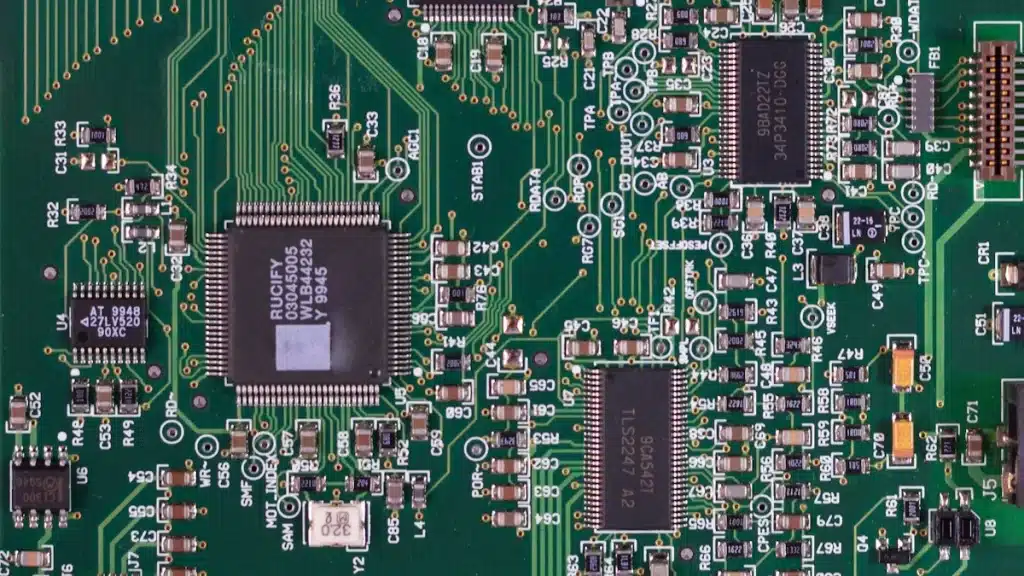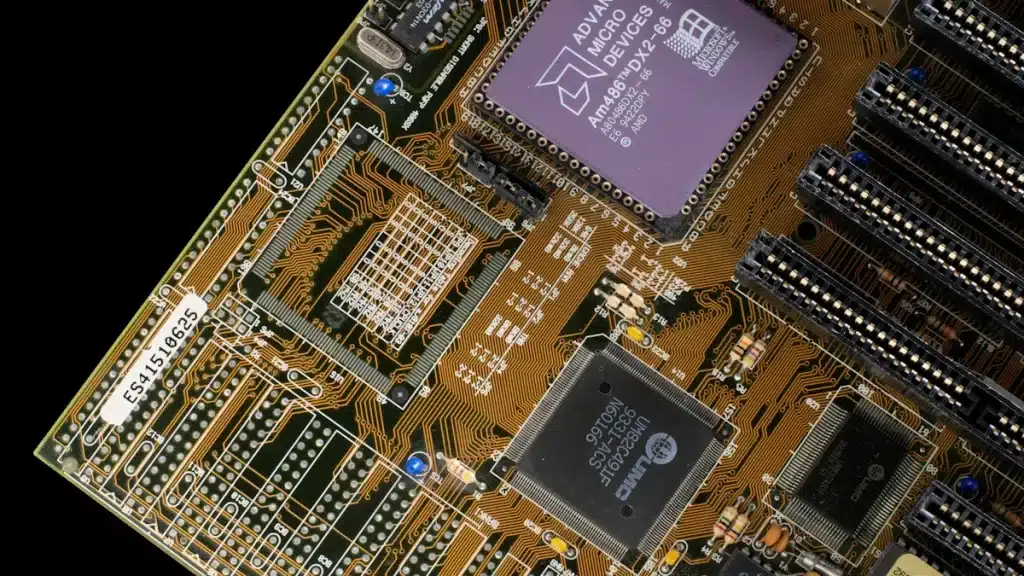
Power sequencing circuit boards are now very important in electronics. As technology improves, more people need these power sequencing circuit boards. The 3D printed circuit board market is growing fast, at 17.6% each year. By 2025, it might be worth $117.75 million. These power sequencing circuit boards help devices work better and save energy.
New designs focus on saving power, working well, and being flexible. Engineers use new tools like accurate semiconductor sequencing and faster speeds. These tools help make smarter systems that use less energy but work great.
Key Takeaways
Power sequencing circuit boards help electronics work well and save energy.
CPLD-based solutions are flexible and respond fast, perfect for tricky power needs.
Modular power systems are easy to expand and make devices more reliable.
Using materials like SiC and GaN improves energy use and system performance.
Testing designs with modular tools finds problems early, making better solutions.
Understanding Power Sequencing Circuit Boards

Definition and Role in Circuit Board Design
Power sequencing boards are important for making electronics work well. They control when and how power is sent to parts. This stops damage and helps devices start correctly.
Power sequencing involves keeping power steady and reducing noise. It also manages voltage changes and stops interference. The table below explains key terms and roles:
Role/Definition | Description |
|---|---|
Power Integrity (PI) | Makes sure power stays steady from start to end. |
Voltage Ripple | Keeps voltage changes small, like under +/-50 mV. |
Ground Bounce | Reduces noise from switching to avoid problems. |
Electromagnetic Interference | Lowers noise in the power system. |
DC Voltage Level | Keeps voltage steady even with high power use. |
Knowing these helps you design boards that work well and last long.
Importance of Power Sequencing in Modern Electronics
Modern gadgets need to save energy and work smarter. Power sequencing helps by using energy better and wasting less. For example, power chips can save up to 30% energy, great for wearables and home devices.
Changing voltage based on need saves more energy. This helps batteries last longer in small gadgets. Adding AI to power chips makes them adjust smarter. This is useful for smart homes and lights.
Power sequencing boards are key for making efficient and powerful electronics.
Limitations of Traditional Power Sequencing Methods
Old power sequencing methods have problems that make them less useful. Sometimes, they don’t work the same every time, causing issues. Bad parts or materials can also lead to poor results.
Another problem is needing skilled workers. The success often depends on how good the workers are. These issues show why better solutions are needed to improve circuit board design.
Comparative Analysis of Advanced Power Sequencing Solutions
CPLD-Based Power Sequencing Solutions
CPLD-based solutions are great for managing power in circuit boards. A Complex Programmable Logic Device (CPLD) lets you adjust power functions to match your needs. These solutions are fast and flexible, making them perfect for advanced uses.
Quick reactions: CPLDs act fast during faults, protecting your circuit.
Easy to scale: They work for small gadgets or big systems.
Saves money: Combining tasks in one CPLD lowers costs and simplifies design.
CPLD-based solutions are helpful when you need control and flexibility. They improve efficiency and make power systems more reliable.
Power Manager ICs with Integrated Control PLD
Power manager ICs combine smart power features with built-in control PLD. These chips make designs easier by needing fewer extra parts.
All-in-one design: Built-in logic handles tasks like voltage checks and fault fixes.
Smaller size: Combining functions into one chip saves space on the board. This is great for small devices like phones and IoT gadgets.
Better performance: These chips deliver the right power at the right time.
Power manager ICs are a good choice for saving space and improving performance. They make power sequencing boards work better overall.
Microcontroller-Based Power Sequencing Architectures
Microcontroller-based systems offer a flexible way to manage power. You can program a microcontroller to create a custom power system for your needs.
Easy to program: You can change power settings using software.
Smart monitoring: Microcontrollers check voltage, current, and temperature for best results.
Budget-friendly: Using common parts can lower costs for small projects.
Microcontroller-based systems are great for custom power management. They add advanced features without making designs too complex.
Distributed Power Management Architectures
Distributed power management is a new way to deliver power. Instead of using one big power source, it uses smaller ones. These smaller power modules spread across the circuit board. They work together to give power to each part efficiently.
Key Features of Distributed Power Management
Localized Power Regulation: Each module controls power for its area. This saves energy and works better.
Scalability: You can add or remove modules easily as needed.
Fault Isolation: If one module breaks, others keep working. This makes the system more reliable.
Improved Thermal Management: Spreading power sources lowers heat in one spot. This helps manage heat better.
Tip: Make sure each module matches its power needs. This stops overloads and keeps the system running well.
Advantages for Modern Electronics
Distributed power management has many benefits for today’s devices. It helps make systems that save energy and work reliably. For example:
Enhanced Efficiency: Power goes only where it’s needed, wasting less. This is great for gadgets like phones and laptops with batteries.
Flexibility in Design: You can design systems for small or big projects, like IoT devices or factories.
Future-Proofing: You can upgrade or expand systems without changing the whole setup.
Practical Implementation Tips
To use distributed power management well, follow these tips:
Use Modular Power Blocks: Pre-made modules are easy to use and save time.
Incorporate Intelligent Monitoring: Add sensors to check voltage, current, and heat. This helps find and fix problems fast.
Optimize Communication Between Modules: Make sure all modules talk to each other to keep the system stable.
Distributed power management is a strong solution for modern devices. It helps create systems that save energy, grow easily, and work reliably for today’s tech needs.
New Trends in Power Sequencing Circuit Boards
Using Wide Bandgap Semiconductors
Wide bandgap semiconductors like silicon carbide (SiC) and gallium nitride (GaN) are changing power systems. These materials handle higher heat and voltage than regular silicon. This makes them better for saving energy in tough situations.
Industries like electric cars and green energy use these semiconductors more now. They need good power systems to work well. SiC and GaN help circuit boards lose less energy. This makes them great for reliable and energy-saving designs.
Using these materials helps create strong and efficient solutions.
Modular Platforms for Testing Power Sequencing
Modular platforms make testing power sequencing designs easier. They let engineers try out ideas before making final products. These tools help test setups and improve how systems work.
A recent study showed their benefits:
Tools found ways to improve design steps.
Over 7,000 tests showed different results to study.
The study helped improve workflows and agreement checks.
These platforms help find problems early and build better systems.
Spread-Out Voltage Sensors for Monitoring
Spread-out voltage sensors are improving circuit board power systems. These sensors check voltage in different parts of the board. They make sure each part gets the right amount of power.
If one area has a problem, the system adjusts quickly. This improves performance and lowers the chance of damage.
Adding more sensors is easy for bigger or complex systems. This makes spread-out sensors useful for modern power designs.
Practical Considerations for Implementing Power Sequencing Solutions
Key Design Tips for Engineers
To design reliable power sequencing systems, focus on stability and efficiency. Pick parts that match your circuit’s voltage and current needs. This keeps the system steady and avoids damage.
Try using simulation tools to test your design first. These tools find problems like voltage changes or noise early. Fixing these issues saves time and effort later.
Keep your design neat and simple. Place power parts close to where they are needed. This reduces energy loss. Use wide paths for high currents to lower resistance.
Tip: Add safety features like overcurrent protection and heat shutdown. These protect your system from unexpected problems.
Balancing Cost and Performance
Balancing cost and performance is important for good power systems. You can do this by designing smartly and using clever methods.
Lower electricity use during busy times to save money.
Use time-based pricing to encourage better energy use.
Control power directly to make grids work better.
These methods cut electricity costs and lower retail prices. Involving users helps avoid making extra power during busy times.
Pick parts that work well but fit your budget. For small projects, microcontroller systems are affordable. For bigger systems, distributed power setups offer flexibility and reliability.
Ensuring Scalability and Future-Proofing
Scalability means your design can grow as needs change. Modular systems make this simple. You can add or remove parts without starting over.
Future-proofing gets your design ready for new tech. Materials like SiC and GaN are now popular. They save energy and handle higher voltages. Adding them makes your design ready for future updates.
Note: Use smart monitoring to check how your system works. These tools find weak spots and help you adjust to new needs.
By focusing on growth and future-proofing, you build systems that last and perform well.
Advanced power sequencing solutions are key for circuit boards in 2025. They help devices use less energy, work better, and grow easily. CPLD-based systems and distributed power setups are great choices. They are flexible and handle problems well.
Custom designs make sure projects work their best. For example:
Method | Benefits |
|---|---|
CRISPR-Cas9-based enrichment | Reaches deep levels (>100× for targets <30 kb) and covers long areas. |
Adaptive sampling | Removes unwanted reads quickly, making sequencing faster and more accurate. |
Matching designs to project needs helps build smart and future-ready systems.
FAQ
What is power sequencing, and why does it matter?
Power sequencing makes sure parts of a circuit get power in the right order. This keeps them safe, lowers noise, and makes systems work better. Without it, delicate parts might break or not work well.
How are CPLD-based solutions different from microcontroller-based systems?
CPLD-based solutions react faster and handle complex designs better. Microcontroller systems are simpler to program and cheaper for small projects. Pick one based on your project’s needs and budget.
Can modular platforms help test power sequencing designs?
Yes! Modular platforms let you try out designs before building them. They find problems early, saving time and money. These tools are great for testing and improving power systems.
What are the advantages of distributed power management?
Distributed power management saves energy and makes systems more reliable. It controls power locally, stops problems from spreading, and handles heat better. This method works well for flexible designs like smart devices and factories.
How can I prepare my power sequencing design for the future?
Use materials like silicon carbide (SiC) or gallium nitride (GaN) for better energy use and higher voltage handling. Add modular designs and smart tools to easily upgrade as technology improves.